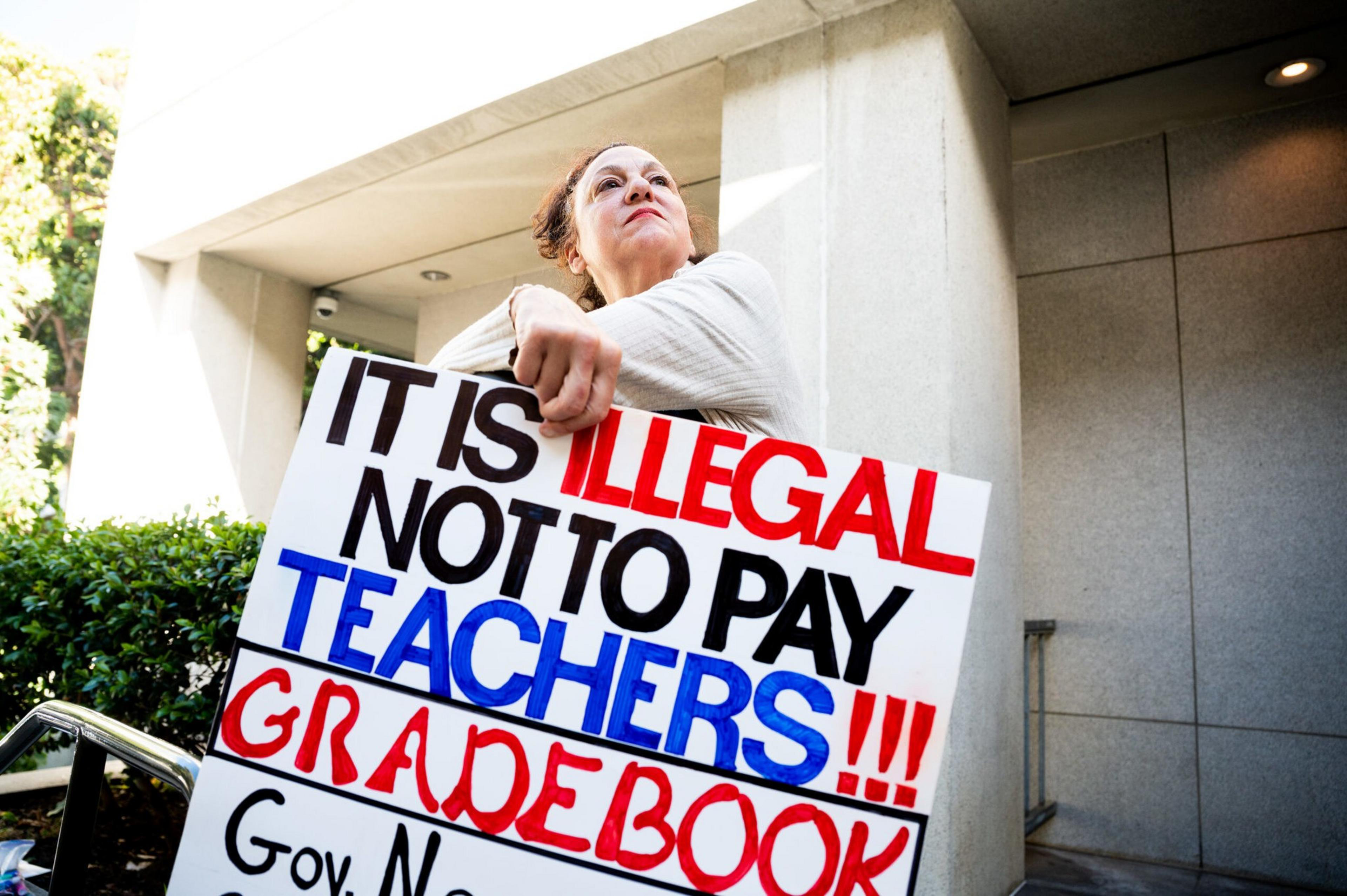After months of bargaining, the San Francisco Unified School District has offered the teachers union a 2% salary increase as part of a new contract proposal — an offer that was immediately rejected.
It’s the latest flashpoint in contentious negotiations over a new two-year contract between the financially struggling district and its 6,300-member workforce. Members of the United Educators of San Francisco are expected to rally and present a strike warning (opens in new tab) to district leaders next week, as the two sides remain far apart.
“We ended the night by declaring an impasse,” UESF’s lead negotiator Adan Luevano said in a video statement (opens in new tab) on Monday after the monthly bargaining session. “The district’s management… has left us no choice.”
The union has been seeking (opens in new tab) a 14% raise for paraeducator staff and a 9% raise for credentialed teachers over the next two years. Frank Lara, vice president of UESF, said the offer of a 2% raise is unacceptable.
“Right now, the district is proposing any potential raise to come from us losing benefits,” Lara said, calling the proposal “effectively a 0% raise,” since it would eliminate several benefits, including sabbatical leave and paid prep time for certain classes.
The district’s teacher salaries vary based on experience, education, and credentials. According to the official website (opens in new tab), the annual salary for new credentialed teachers starts at $79,468, while noncredentialed teachers start at $69,525.
SFUSD spokesperson Laura Dudnick said the district must ensure long-term financial stability and address ongoing deficit spending.
“We remain committed to negotiating in good faith,” Dudnick said. “SFUSD deeply values all employees and dedicates a large portion of its budget to compensation, benefits, and retirement.”

The district noted that in 2023, under Superintendent Matt Wayne, it agreed to what it called “historic raises” (opens in new tab) for UESF members, including a $9,000 pay increase in the first year and a 5% raise the following year. (Wayne resigned last year amid controversy over the school closure proposal.) Under new Superintendent Maria Su, district officials have criticized (opens in new tab) those raises as overly generous and said they “negatively impacted the district’s fiscal position.”
Lara, however, said the raises helped stabilize the workforce. He also called for more transparency from the district about its finances.
“We can have serious discussions,” Lara said. “Where the money is, where it is being prioritized, and how best to spend it to stabilize schools.”
The United Administrators of San Francisco, which represents principals and administrators, has also threatened to strike.
SFUSD remains under state fiscal monitoring due to its financial troubles. The district this year approved $114 million in budget cuts and expects to reduce spending by $50 million in 2025-26.
Long road to a strike
UESF has circulated a strike ready petition (opens in new tab) across school sites. Lara said over 4,000 members across 100 school sites have signed the petition committing to go on strike, and the union plans to present the signatures to the Board of Education at its Oct. 14 meeting.
Before any walkout, the union must hold a strike authorization vote among members; Lara said this could take place by the end of the year.
Still, a strike could be a long way off, even though “the situation looks quite bleak,” according to James Logan, chair of the labor and employment studies department at San Francisco State University.
“The two parties remain very far apart,” said Logan. “The district will have to move much closer to what the teachers are demanding if a strike is to be prevented.”
Logan said teacher strikes have become increasingly common in California and across the country as educators face rising costs and stagnant pay.
But that process can be complicated and lead to several possible outcomes. Logan said unions usually call for a strike vote only when they’re confident of overwhelming support. But even if authorization is granted, last-minute compromises could stave off a strike.
“The stakes are high right now,” he added. “Teachers nationwide feel underpaid and undervalued, and public education is being underfunded.”
